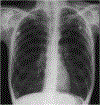A Contemporary Approach to the Treatment of Perioperative Bronchospasm
- PMID: 39764475
- PMCID: PMC11702345
- DOI: 10.31480/2330-4871/112
A Contemporary Approach to the Treatment of Perioperative Bronchospasm
Abstract
The incidence of asthma is increasing, and the ageing of the United States population is leading to an increase in the prevalence of patients living with chronic obstructive pulmonary disease. This has led to an increased need to manage bronchospasm in the perioperative period. Very effective methods to treat bronchospasm like intravenous dexmedetomidine, lidocaine, magnesium, ketamine and steroids as well as inhalational sevoflurane are available but are currently underused. Inhaled beta-2 agonists like albuterol are instead often relied upon as the sole therapeutic agent - often with limited response. Just like with pain management, the successful treatment of perioperative bronchospasm requires a multimodal approach. The diagnosis of intraoperative bronchospasm must be rapid, and the treatment must be effective to prevent the dreaded "dynamic hyperinflation syndrome". This article reviews the diagnosis of bronchospasm and the contemporary treatment methods that should be employed to prevent bronchospasm-related morbidity and mortality during the perioperative period.
Keywords: Beta-2 agonists; Capnography; Hyperinflation; Perioperative bronchospasm.
Figures


Similar articles
-
Perioperative Care of the Pediatric Patient and an Algorithm for the Treatment of Intraoperative Bronchospasm.J Asthma Allergy. 2023 Jun 23;16:649-660. doi: 10.2147/JAA.S414026. eCollection 2023. J Asthma Allergy. 2023. PMID: 37384067 Free PMC article. Review.
-
[Management of perioperative bronchospasm.].Rev Bras Anestesiol. 2002 Nov;52(6):728-38. Rev Bras Anestesiol. 2002. PMID: 19475245 Portuguese.
-
[Standard technical specifications for methacholine chloride (Methacholine) bronchial challenge test (2023)].Zhonghua Jie He He Hu Xi Za Zhi. 2024 Feb 12;47(2):101-119. doi: 10.3760/cma.j.cn112147-20231019-00247. Zhonghua Jie He He Hu Xi Za Zhi. 2024. PMID: 38309959 Chinese.
-
Emergency Medical Services Management of Bronchospasm in the United States: A Cross-Sectional Analysis and Nationwide Quality Assessment.Prehosp Emerg Care. 2024;28(2):231-242. doi: 10.1080/10903127.2023.2220021. Epub 2023 Jun 16. Prehosp Emerg Care. 2024. PMID: 37276151
-
Perioperative management of patients with asthma during elective surgery: A systematic review.Ann Med Surg (Lond). 2021 Sep 20;70:102874. doi: 10.1016/j.amsu.2021.102874. eCollection 2021 Oct. Ann Med Surg (Lond). 2021. PMID: 34603720 Free PMC article. Review.
References
-
- Radhakrishnan DK, Dell SG, Guttman A, Shariff SZ, Liu K, To T, et al. Trends in the age of diagnosis of childhood asthma. J Allergy Cllin Immunol 2014; 134(5):1057–62. - PubMed
-
- Barros R, Moreira P, Padrao P, Texeira VH, Carvalho P, Delgado L, et al. Obesity increases the incidence of asthma and worsens asthma severity. Clin Nutr 2017; 36(4):1068–74. - PubMed
Grants and funding
LinkOut - more resources
Full Text Sources
